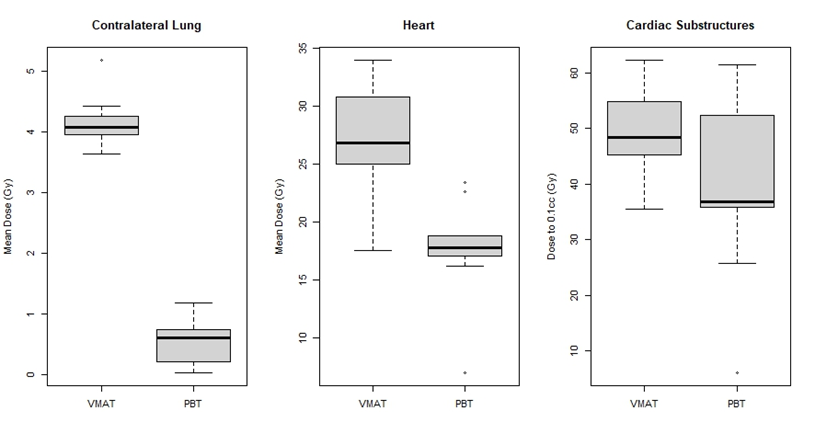A comparison of proton and photon radiotherapy for treatment of malignant pleural mesothelioma
Paul Shaw,
United Kingdom
PO-1943
Abstract
A comparison of proton and photon radiotherapy for treatment of malignant pleural mesothelioma
Authors: David Lines1, Kimberly Durno2, Frances Charlwood1, Paul Shaw3, Narinder Lalli2, Vasilis Rompokos2, Crispin Hiley2
1The Christie NHS Foundation Trust, Proton Beam Therapy, Manchester, United Kingdom; 2University College London Hospitals, Proton Beam Therapy, London, United Kingdom; 3Velindre Cancer Centre, Radiotherapy, Cardiff, United Kingdom
Show Affiliations
Hide Affiliations
Purpose or Objective
Introduction/Objective: Malignant pleural mesothelioma (MPM) is a rare cancer affecting around 2,700 people each year in the UK. The survival rates within this population are low, with fewer than 7% of patients surviving beyond 5 years. The use of radiotherapy to treat UK patients with MPM has been limited to palliation, with only 15% of patients receiving radiation as part of their treatment. Delivering radical treatment doses (>50Gy) with conventional radiotherapy to the hemi-thorax is largely unfeasible due to the significant associated toxicity. One of the benefits of proton beam therapy (PBT) is the ability to reduce dose to surrounding healthy tissue, which may enable the delivery of radical doses of radiotherapy while minimizing pulmonary and cardiac toxicity. The study presented here seeks to investigate the potential benefits of proton beam therapy, compared with conventional radiotherapy, for the treatment of MPM. This study also presents an analysis of dose to cardiac substructures, which have been demonstrated to be a predictor of overall survival.
Material and Methods
Method: A cohort of 10 patients with MPM, previously treated with conventional radiotherapy, were retrospectively planned with a 4-field Intensity Modulated Proton Therapy (IMPT) technique. Treatments were planned to give a radiobiological equivalent dose of 50Gy in 25# to the pleura, and where required the GTV was boosted to 60Gy in 25# using an SIB technique. The intended target coverage was V95% > 95% evaluated under the worst-case uncertainty scenario (using 5mm/5%). Doses to OARs (including the cardiac substructures) were assessed and compared between modalities.
Results
Results: Acceptable target coverage was achieved for each of the 10 patients, across both modalities. When compared with conventional radiotherapy (CRT), treatments planned with PBT achieved a mean reduction in dose to both the contralateral lung (Mean dose: 0.5Gy PBT vs. 4.2Gy CRT) and heart (Mean dose: 17.6 Gy PBT vs. 27.5 Gy CRT). Additionally, significant reductions were seen in oesophageal and ipsilateral kidney dose. The D0.1cc to the cardiac substructures was reduced by an average of 9Gy when planned with PBT, although it is acknowledged that these structures were not specifically included in the plan optimisation.

Figure 1 – Boxplots of OAR statistics for (left) contralateral lung, (centre) heart and (right) cardiac substructures
Conclusion
Conclusions: This planning study highlights the significant potential benefits of proton beam therapy in the treatment of MPM, and helps inform the PBT planning solution that will be incorporated into the clinical trial protocol for the prospective ‘Hemithoracic Irradiation with Proton Therapy in Malignant Pleural Mesothelioma’ (HIT-Meso) study which will be open for recruitment in the UK in 2023.